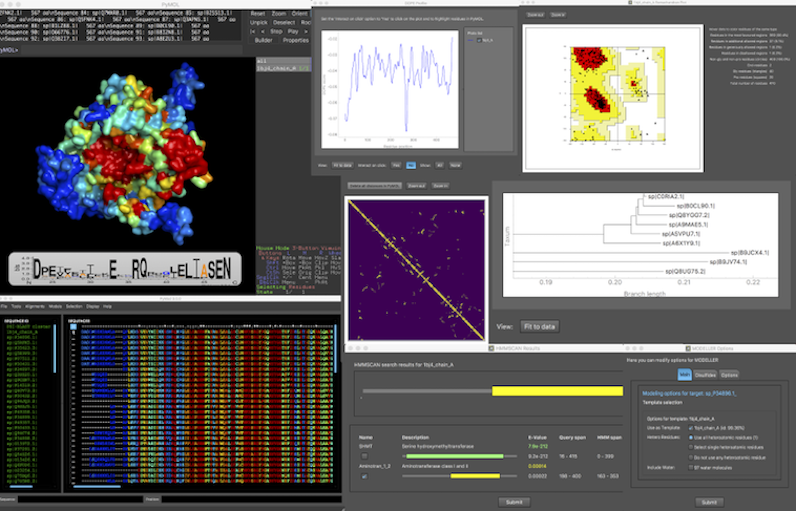Web page: http://schubert.bio.uniroma1.it/pymod/
GitHub: https://github.com/pymodproject/pymod

Reference
Giacomo Janson, Alessandro Paiardini, PyMod 3: a complete suite for structural bioinformatics in PyMOL, Bioinformatics, Volume 37, Issue 10, 15 May 2021, Pages 1471–1472, https://doi.org/10.1093/bioinformatics/btaa849
Abstract
The PyMod project is designed to act as a fully integrated interface between the popular molecular graphics viewer PyMOL, and some of the most frequently used tools for structural bioinformatics, e.g. BLAST, HMMER, Clustal, MUSCLE, PSIPRED, DOPE and MODELLER. Here we report its latest release, PyMod 3, which has been completely renewed with a graphical interface written in PyQt, to make it compatible with the most recent PyMOL versions, and has been extended with a large set of new functionalities compared to its predecessor, i.e. PyMod 2. Starting from the amino acid sequence of a target protein, users can take advantage of PyMod 3 to carry out all the steps of the homology modeling process (i.e. template searching, target–template sequence alignment, model building and quality assessment). Additionally, the integrated tools in PyMod 3 may also be used alone, in order to extend PyMOL with a wide range of capabilities. Sequence similarity searches, multiple sequence/structure alignment building, phylogenetic trees and evolutionary conservation analyses, domain parsing, single/multiple chains and loop modeling can be performed in the PyMod 3/PyMOL environment.Availability and implementation
A cross-platform PyMod 3 installer package for Windows, Linux and Mac OS X and a complete user guide with tutorials, are available at https://github.com/pymodproject/pymodSupplementary information
Supplementary data are available at Bioinformatics online.